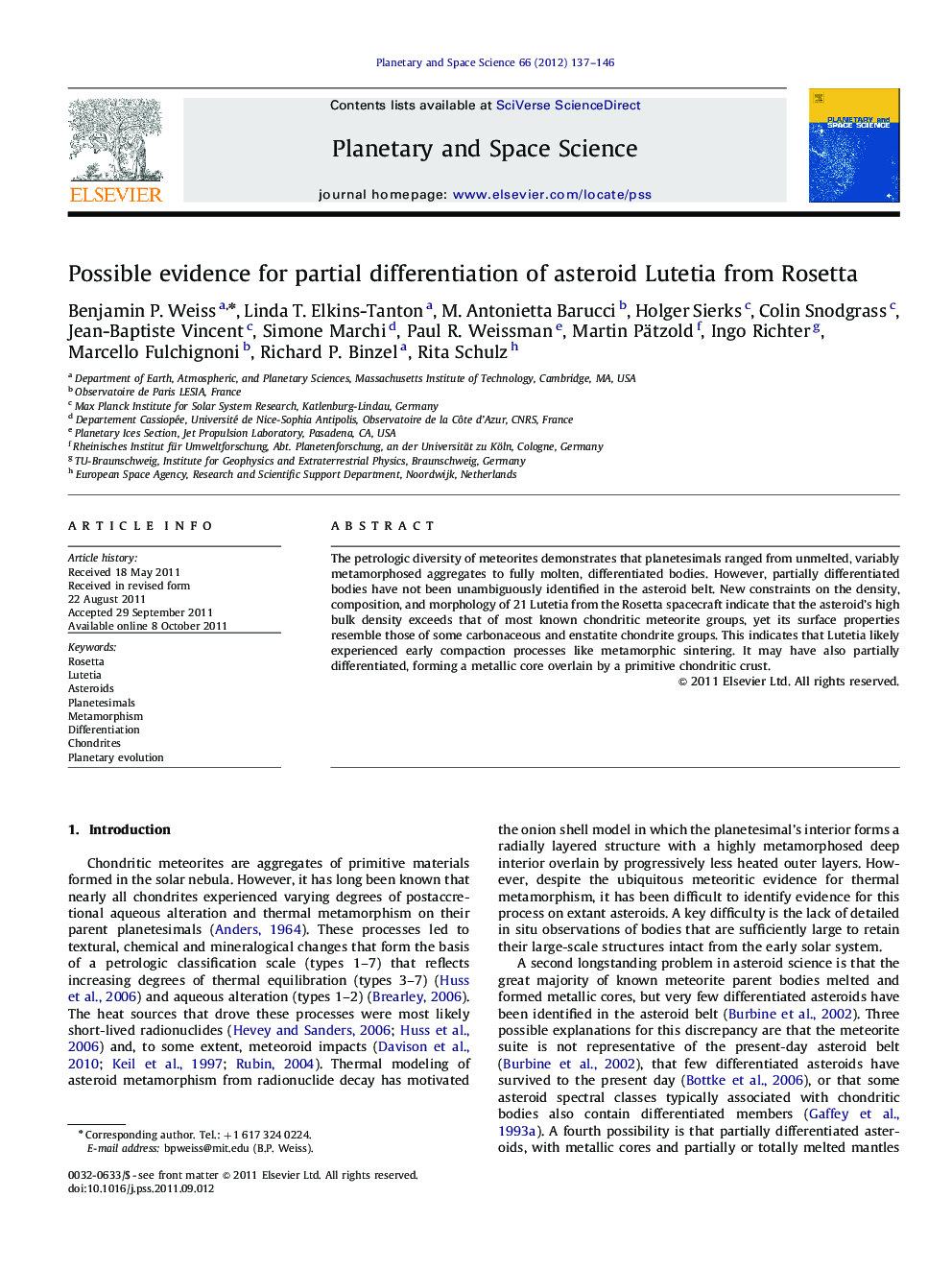| Article ID | Journal | Published Year | Pages | File Type |
|---|---|---|---|---|
| 1781489 | Planetary and Space Science | 2012 | 10 Pages |
The petrologic diversity of meteorites demonstrates that planetesimals ranged from unmelted, variably metamorphosed aggregates to fully molten, differentiated bodies. However, partially differentiated bodies have not been unambiguously identified in the asteroid belt. New constraints on the density, composition, and morphology of 21 Lutetia from the Rosetta spacecraft indicate that the asteroid's high bulk density exceeds that of most known chondritic meteorite groups, yet its surface properties resemble those of some carbonaceous and enstatite chondrite groups. This indicates that Lutetia likely experienced early compaction processes like metamorphic sintering. It may have also partially differentiated, forming a metallic core overlain by a primitive chondritic crust.
► Lutetia is of sufficient size to be melted and potentially retain its original radial structure. ► Lutetia's surface resembles that of a carbonaceous or enstatite chondrite. ► The asteroid's bulk density equals or exceeds that of all non-CB carbonaceous chondrites. ► Lutetia at least experienced early metamorphic sintering and other compaction processes. ► Lutetia also may be partially differentiated, containing a metallic core overlain by a chondritic crust.
